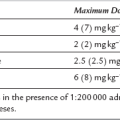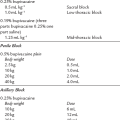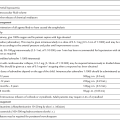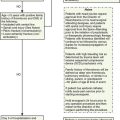
Hospitals play a crucial role in the well-being of communities, serving as places where individuals seek care, comfort, and healing. In today’s competitive healthcare landscape, it is patient satisfaction that reflects the quality of care provided. It is more than just a measure of comfort—patient satisfaction directly impacts a hospital’s reputation, patient loyalty, and even financial stability.
Here, we will explore ten key strategies hospitals can adopt to enhance patient satisfaction, ensuring they provide the best possible care to their communities.
1. Improve Communication Between Staff and Patients
Clear and empathetic communication between hospital staff and patients is vital for enhancing patient satisfaction. Patients often feel vulnerable and anxious when seeking medical care, and effective communication can alleviate these concerns. Hence, training staff to communicate clearly and empathetically is essential. This involves listening actively to patients, addressing their questions and concerns, and providing information in a way that is easy to understand. Effective communication helps build trust and rapport between patients and healthcare providers, making patients feel valued and understood. Moreover, clear communication reduces the likelihood of misunderstandings and errors, leading to better patient outcomes and satisfaction.
2. Hire Competent Managers with Healthcare Management Education
Effective management is fundamental to improving patient satisfaction in hospitals. Competent managers are responsible for overseeing hospital operations, making sure that every aspect runs smoothly, from patient admissions to discharge. Hiring managers with a strong educational background and relevant degree, such as a conventional or online bachelors in health care management, is crucial. These managers understand the complexities of hospital administration, patient care, and the importance of a patient-centered approach. They can implement best practices in managing hospital resources, staffing, and patient services, contributing to a more positive patient experience. Moreover, well-educated managers are better equipped to navigate the dynamic and often challenging healthcare landscape, making informed decisions that benefit both the hospital and its patients.
3. Enhance the Physical Environment of the Hospital
The physical environment of a hospital plays a vital role in patient satisfaction. A clean, comfortable, and welcoming environment can positively impact patients’ perceptions of their care experience. Hospitals should invest in creating a pleasant physical environment by focusing on elements such as lighting, noise reduction, and comfortable waiting areas. For example, providing comfortable seating, maintaining cleanliness, and ensuring that hospital areas are well-lit and quiet can elevate the patient experience, thereby improving satisfaction.
4. Streamline Administrative Processes
Administrative inefficiencies, such as long wait times and complex procedures, can frustrate patients and negatively impact their overall satisfaction. Streamlining administrative processes helps improve the patient experience. Hospitals can adopt digital tools and technologies to make check-ins, billing, and scheduling more efficient and user-friendly. For example, implementing online appointment scheduling, digital check-in kiosks, and electronic billing systems can reduce wait times and simplify administrative tasks for patients. By minimizing administrative burdens, hospitals can ensure a smoother and more pleasant experience for patients, enhancing their overall satisfaction.
5. Implement a Robust Patient Feedback System
A robust patient feedback system is a valuable tool for improving patient satisfaction. Collecting and analyzing patient feedback allows hospitals to identify areas for improvement and implement changes for a better patient experience. Hospitals should establish easy and accessible methods for patients to provide feedback, such as surveys, suggestion boxes, or digital platforms. It is also important to communicate to patients that their feedback is valued and used to make meaningful improvements. By acting on patient feedback, hospitals demonstrate their commitment to continuous improvement and responsiveness to patient needs.
6. Focus on Personalized Patient Care
Patients appreciate healthcare that is tailored to their individual needs, preferences, and medical histories. Hospitals can achieve this by developing personalized care plans that consider each patient’s unique circumstances. For example, customizing treatment options, involving patients in decision-making processes, and respecting their cultural and personal preferences can make patients feel more satisfied with the care provided. Furthermore, offering flexible visiting hours, special meal requests, and other personalized services can make patients feel valued and cared for.
7. Improve Coordination of Care Among Healthcare Providers
Effective coordination of care is vital in ensuring a seamless patient experience. In many cases, patients receive care from multiple providers, including physicians, nurses, specialists, and other healthcare professionals. Poor coordination among these providers can lead to gaps in care, miscommunications, and increased patient anxiety. Hospitals should invest in systems and processes that facilitate better communication and coordination among healthcare providers. For instance, using integrated electronic health records (EHRs) can allow all providers involved in a patient’s care to access up-to-date information, reducing errors and enhancing care continuity. Regular interdisciplinary team meetings and care coordination protocols can also help ensure that all team members are on the same page regarding patient care, leading to improved outcomes and patient satisfaction.
8. Promote a Culture of Empathy and Compassion
Empathy and compassion are foundational to patient care. Patients often experience stress, anxiety, and discomfort while in a hospital, and compassionate care can significantly ease these feelings. Hospitals should cultivate a culture where empathy is a core value, encouraging staff to demonstrate genuine concern and understanding in all patient interactions. This can be achieved through training programs, workshops, and regular reinforcement of the importance of compassionate care. Simple gestures, such as listening to patients’ concerns, offering reassurance, and providing comfort, can go a long way in improving satisfaction. When patients feel cared for and understood, they are more likely to have a positive perception of their care experience.
9. Leverage Technology to Enhance Patient Experience
Hospitals can leverage various healthcare software development solutions and technological tools to streamline processes, enhance communication, and provide more convenient access to care. For instance, telemedicine services enable patients to consult with healthcare providers from the comfort of their homes, reducing the need for in-person visits and increasing convenience. Additionally, mobile apps and patient portals allow patients to access their medical records, schedule appointments, and communicate with their providers more easily. Implementing technology solutions such as real-time notifications, online bill payments, and digital wayfinding can further enhance the patient experience, making hospital visits more efficient and less stressful.
Improving patient satisfaction is essential for hospitals to maintain their reputation, foster patient loyalty, and achieve positive patient outcomes. By adopting these strategies, hospitals can transform the patient experience into one that promotes healing and comfort. The journey to improve patient satisfaction is ongoing, but every effort made in this direction reinforces a hospital’s commitment to excellence and its role as a compassionate caregiver.





